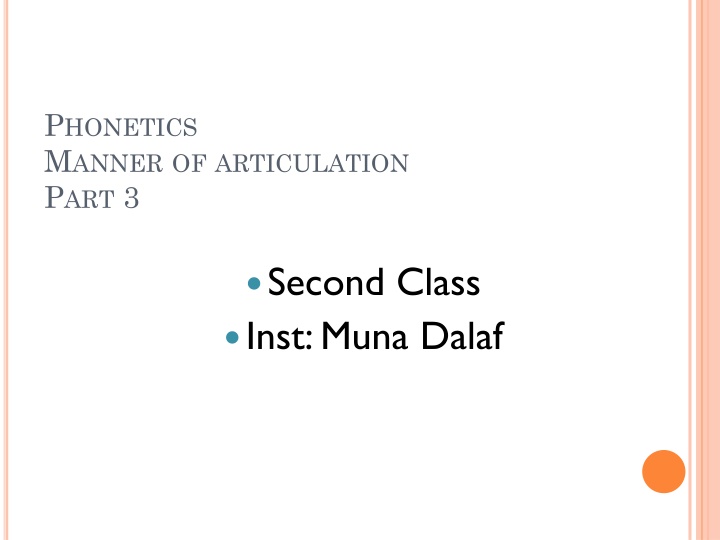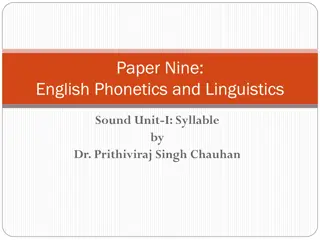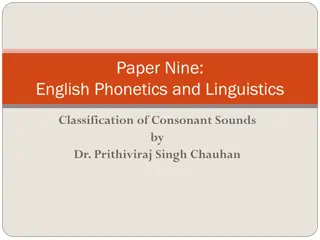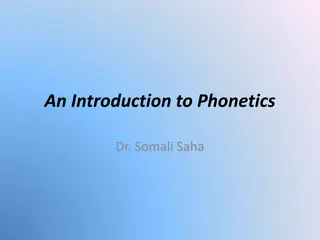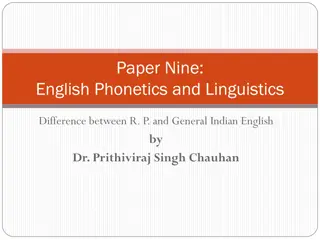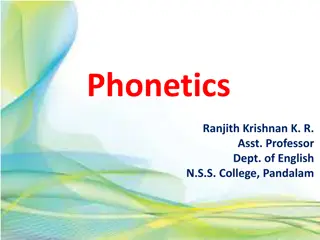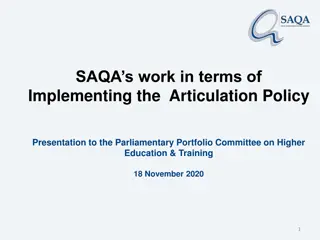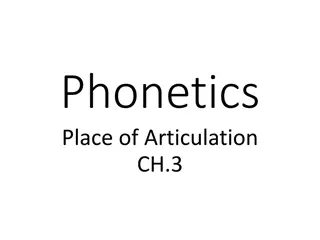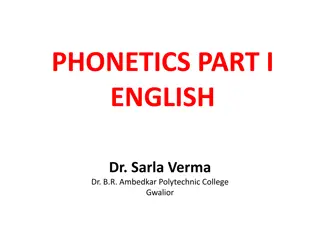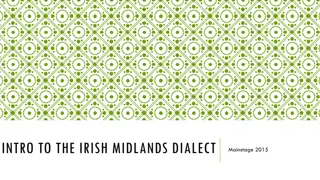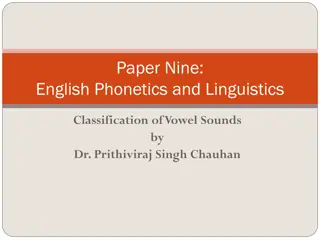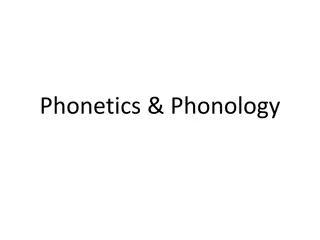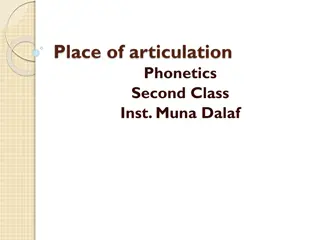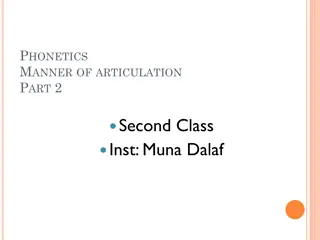PHONETICS: Manner of Articulation Explained
Delve into the detailed exploration of the second class involving phonetics, particularly focusing on the intricacies of Muna Dalaf. Discover how articulation plays a crucial role in understanding the phonetic nuances and enhancing language comprehension, with a special emphasis on articulation forms. Gain valuable insights into articulation patterns and their impact on linguistic communication, paving the way for a deeper understanding of language structures and phonetic processes.
Download Presentation

Please find below an Image/Link to download the presentation.
The content on the website is provided AS IS for your information and personal use only. It may not be sold, licensed, or shared on other websites without obtaining consent from the author.If you encounter any issues during the download, it is possible that the publisher has removed the file from their server.
You are allowed to download the files provided on this website for personal or commercial use, subject to the condition that they are used lawfully. All files are the property of their respective owners.
The content on the website is provided AS IS for your information and personal use only. It may not be sold, licensed, or shared on other websites without obtaining consent from the author.
E N D
Presentation Transcript
PHONETICS MANNER OF ARTICULATION PART 3 Second Class Inst: Muna Dalaf
Lateral sounds are produced by raising the tongue close to the hard palate and letting the air passes on both sides of the tongue. The only lateral sound in English is the sound /l/
Examples: Learn / l :n /t Loud / laud / The / l / sound before vowels is known as clear / l / as in believe / bili:v / but before consonants is dark as in cold / k ld / , and in final position as in bill / bil /
GLIDINGSOUNDS Gliding sounds are produced by weakly articulated vowels followed by other more prominent vowels. There are three gilding sounds in English which have a quick, smooth, non friction glide towards a following vowel sound.
They are the sound in which the tongue is not raised to the extent to make an audible friction and is not lowered to the extent to make a vowel like sound. Gliding or( approximants )are normally voiced Read / ri:d / You / ju: /
